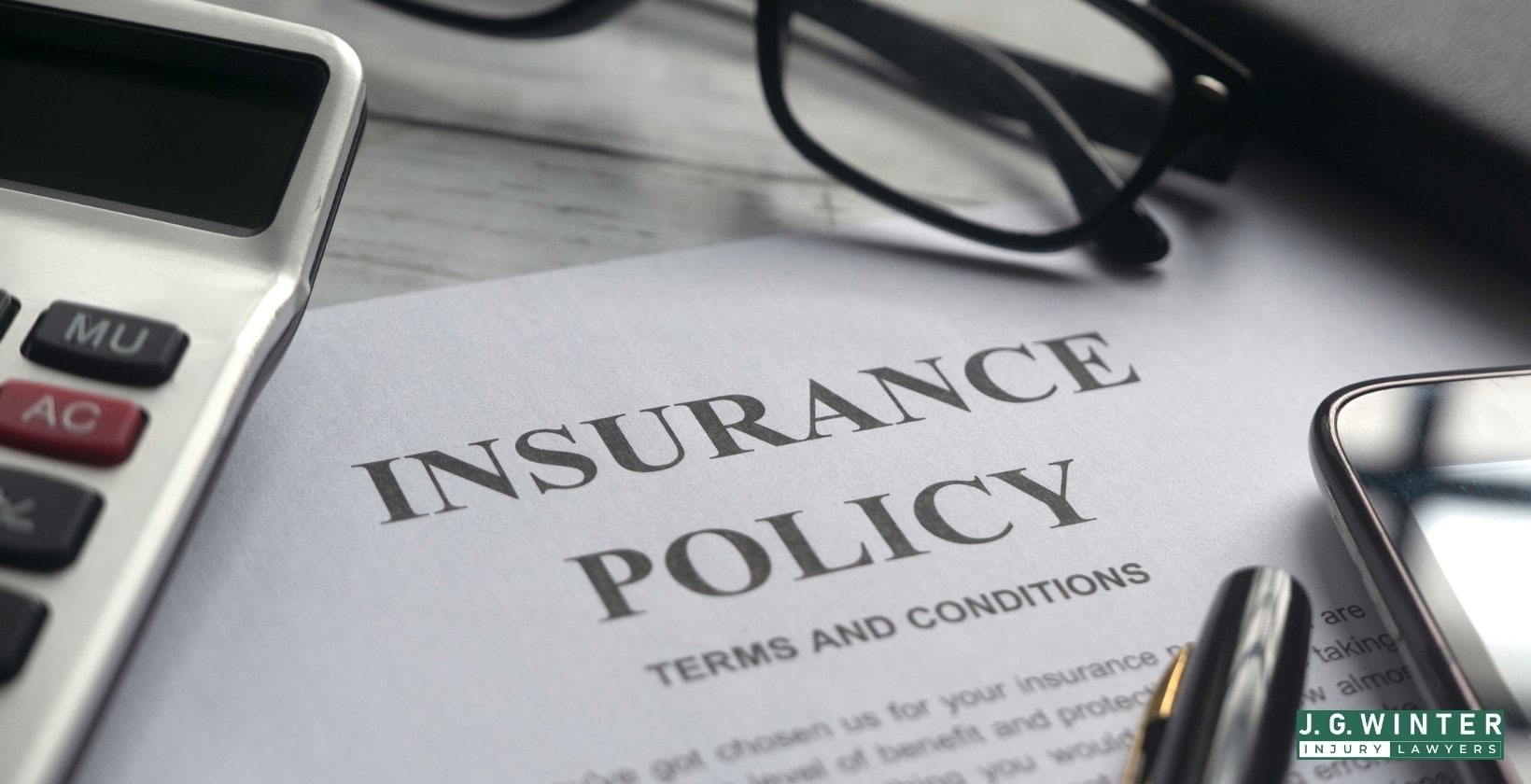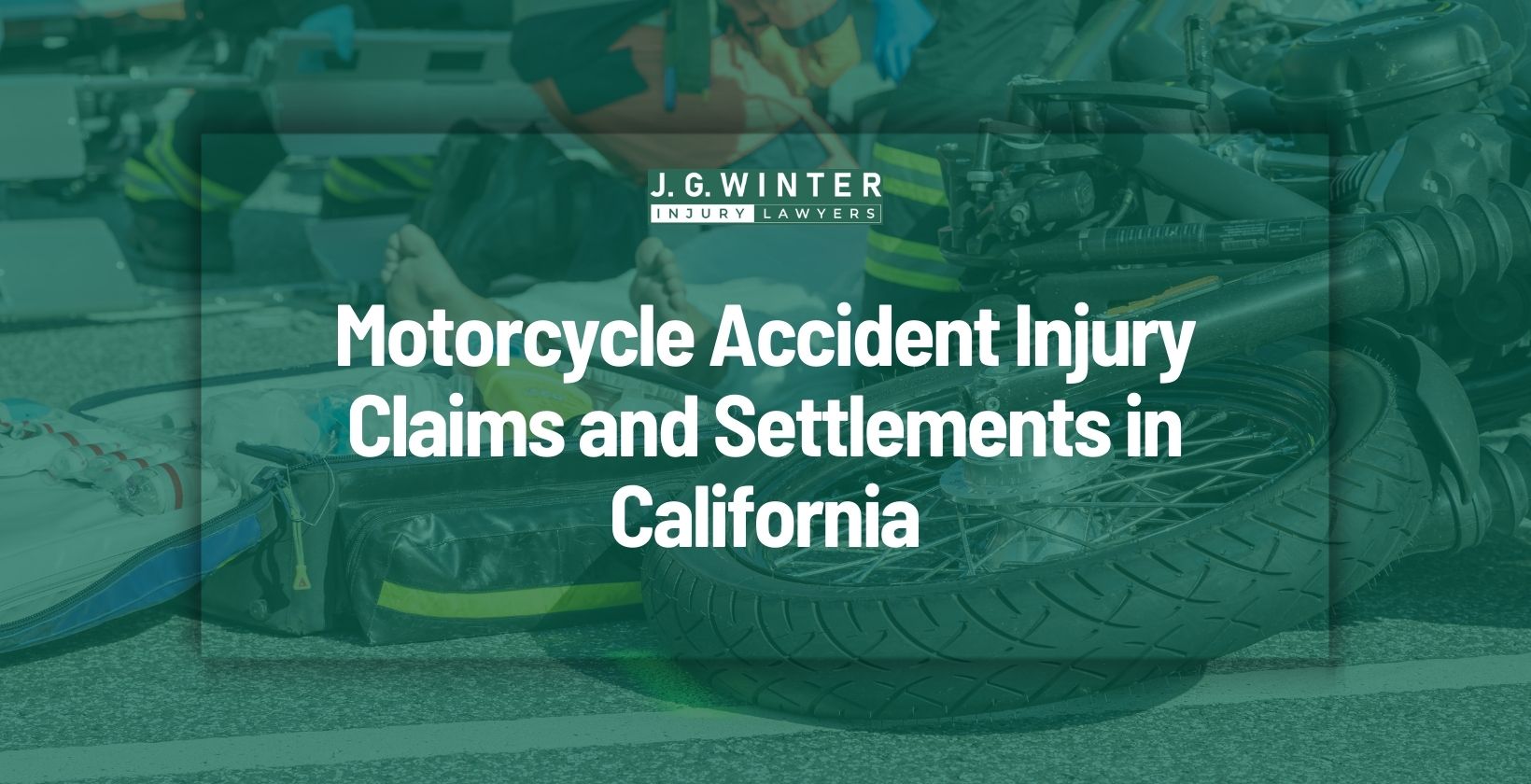A serious motorcycle crash changes everything: your health, your routine, and your ability to earn a living. In California, motorcycle accident injury claims & settlements exist to help riders recover more than just emergency bills; they cover long-term medical care, lost income, emotional harm, and more.
Knowing what your case is truly worth, what evidence matters, and how California law protects riders can help you move forward with clarity and confidence.
What does a motorcycle accident injury claim cover in California?
A motorcycle accident claim in California provides financial compensation for the losses you’ve suffered after a crash. What you’re entitled to depends on the severity of your injuries, the damage involved, and how the crash occurred.
Medical expenses, rehab, and future care costs
Motorcycle accident medical expenses are often substantial, especially when injuries are serious. California law allows injured riders to recover compensation for both current and future medical needs.
These include:
- Emergency room visits and ambulance transport: Immediate care costs after the crash.
- Hospital stays and surgeries: Inpatient treatment and procedures for serious injuries.
- Physical therapy and rehabilitation: Ongoing recovery programs, often lasting weeks or months.
- Prescription medications and medical equipment: Pain management, braces, mobility devices, and more.
- Long-term or future medical care: For conditions like spinal injuries or traumatic brain injuries that require extended treatment plans.
Lost income and reduced earning potential
Lost wages from missed work are part of nearly every motorcycle accident claim in California. If your injuries affect your ability to return to your job, temporarily or permanently, the law allows you to recover those financial losses.
Example:
A rider who works in construction misses two months due to a leg fracture. That lost income can be calculated using pay stubs or tax records.
If the injury later requires the rider to take a lower-paying desk job, the reduced earning potential is also compensable as reduced earning capacity.
Pain, suffering, and emotional damages
Not all motorcycle accident injuries are physical. Many victims experience lasting emotional challenges, legally classified as non-economic damages under California law.
These losses may exceed finanial damages, especially in cases involving long-term trauma or lifestyle changes.
Common examples include:
- Chronic pain that disrupts normal routines.
- Mental health conditions, such as anxiety, panic attacks, or depression.
- Loss of consortium, impacting spousal or family relationships.
- Reduced quality of life, including inability to ride, work, or engage in daily activities.
Property damage and motorcycle repair
Motorcycle property damage is part of your injury claim. If your bike is damaged in the crash, you may be entitled to compensation based on the extent of the damage and its fair market value.
Total-loss value applies when repairs exceed the bike’s market worth.
Insurers typically calculate payouts based on the motorcycle’s fair market value before the crash, not the cost of repairs.
- Repair costs are recoverable if your motorcycle is fixable.
- Total-loss value applies when repairs exceed the bike’s market worth.
- Insurers typically calculate payouts based on the motorcycle’s fair market value before the crash, not the cost of repairs.
Example:
If your bike is valued at $9,000 but repairs are estimated at $11,000, your insurer may offer a payout based on the fair market value before the crash, not the repair estimate.
How does the motorcycle injury claim process work?
The process involves filing an insurance claim, proving who caused the crash, documenting your losses, and negotiating a settlement or pursuing a lawsuit if needed.
Each step must be supported by clear evidence and handled within California’s legal deadlines to protect your right to compensation.
Filing a claim with the at-fault driver’s insurance
Most motorcycle accident claims begin by notifying the insurance company of the at-fault driver. Starting this process requires collecting and submitting evidence that shows how the accident occurred and what damages resulted.
- Police report: Includes crash details and initial fault assessments.
- Medical records: Show the extent of your injuries and how they relate to the crash.
- Proof of damages: This includes photos of the scene, motorcycle repair estimates, and evidence of lost wages.
Once submitted, the insurer assigns a claims adjuster to review the case. Expect follow-up questions, document requests, and a low initial offer. Legal support during this stage can help you avoid early mistakes and position your claim more strongly.
Proving liability and causation
California uses a comparative negligence system, meaning liability can be shared. To receive compensation, you must prove the other party was mostly or entirely at fault and that their actions directly caused your injuries.
Evidence that supports liability includes:
- Police reports.
- Witness statements.
- Crash photos or dashcam videos.
- Medical records linking your injuries to the crash.
Example scenario:
A car merges into a motorcyclist’s lane without signaling, causing a side-impact crash. Even if the driver claims the rider was speeding, footage showing the unsafe merge can establish primary fault.
Negotiating a settlement vs. filing a lawsuit
Most motorcycle accident claims settle before trial. But if the insurer disputes fault or undervalues your losses, filing a lawsuit may be necessary to recover fair compensation.
Here’s how settlements and lawsuits compare in California:
| Aspect | Settlement | Lawsuit |
| Timeline | Weeks to a few months | Often 12–24 months or longer |
| Costs | Lower; fewer legal and court expenses | Higher due to expert fees, discovery, and filings |
| Payout Amount | Often lower, but faster | Often higher if liability and damages are strong |
| Stress Level | Less formal, less emotional toll | Can be demanding with depositions, trial prep |
| Control Over Outcome | You control the acceptance of the offer | The judge or jury decides the outcome |
Settlements offer speed and certainty, but lawsuits often create leverage and may result in higher compensation if strong evidence supports your case.
Average settlement amounts and real case examples in California
Motorcycle accident settlement amounts in California vary widely, sometimes by tens or even hundreds of thousands of dollars. Factors like the severity of your injuries, who was at fault, and how well your case is built all shape the final outcome.
While no two claims are exactly alike, real-world examples and average settlement data can offer useful context for what to expect.
Know more about the average settlement for a motorcycle accident lawsuit.
Average payout for different injury types (e.g., fractures, TBI, spinal injury)
Settlement values depend heavily on the type and severity of injuries. Below are typical ranges based on real California case data:
| Injury Type | Estimated Settlement Range |
| Minor soft tissue injuries (e.g., whiplash, bruises) | $10,000 – $25,000 |
| Moderate fractures (e.g., arm or collarbone) | $30,000 – $100,000 |
| Severe fractures requiring surgery | $100,000 – $300,000+ |
| Traumatic Brain Injury (TBI), moderate | $250,000 – $750,000 |
| Spinal cord injuries, partial paralysis | $500,000 – $1.5 million+ |
| Amputations or permanent disability | $1 million – $5 million+ |
These numbers reflect settlement trends, not guarantees. The actual value depends on evidence, case strength, and negotiation skill.
Real-world settlement ranges (examples from California cases)
Here are real examples of how settlement amounts vary based on liability, injury type, and case strategy:
- $275,000 settlement: Rider hit by a rideshare driver while turning legally; suffered a fractured leg; fast settlement due to clear fault and strong records.
- $850,000 settlement: Rider struck during an illegal U-turn by a delivery truck; multiple fractures and mild TBI; higher payout reflected long-term recovery and legal pressure.
- $150,000 settlement: Lane-splitting rider partially at fault; injuries were moderate; comparative fault reduced the award despite strong evidence.
Outlier settlements: Why some claims exceed the norm
Some motorcycle injury claims result in far higher payouts due to extreme harm, strong evidence, or serious negligence.
What drives high-value settlements:
- Permanent or catastrophic injury
- Strong proof of negligence
- High insurance coverage or government liability
- Long-term care costs and emotional trauma
- Expert legal representation
Examples:
- $4 million: Rider paralyzed after being hit by a distracted commercial driver. Long-term care and pain/suffering drove value.
- $3.2 million: Rider suffered permanent cognitive damage after crashing into a known road hazard. The jury faulted the city for its prior inaction.
Factors that influence a motorcycle accident settlement value
No two motorcycle accident claims are valued equally, even when involving similar injuries. In California, several key factors determine the amount of compensation a victim can realistically recover. These include the seriousness of the injury, shared responsibility for the crash, the at-fault driver’s insurance coverage, and the strength of your legal strategy.
Severity of injuries and long-term medical needs
More serious injuries usually lead to higher settlements, but how you document those injuries matters just as much. Claims backed by detailed treatment plans, long-term prognosis letters, and life care cost projections often recover significantly more.
Tip: Get written statements from your treating physicians on how the injury impacts your daily life and future health needs. These documents strengthen your demand package.
Level of fault and comparative negligence rules in California
Under California’s pure comparative negligence law, even 1% fault assigned to you reduces your compensation.
What’s less known: insurers often exaggerate fault to reduce payouts.
Strategy:
Use traffic cam footage, expert accident reconstruction, or multiple witness statements to dispute inflated fault percentages. Reducing your assigned fault by even 10% can increase your payout by thousands.
Insurance policy limits and available coverage
According to SB 1107, the minimum liability insurance requirements for drivers in California were updated in 2025 to $30,000 per person and $60,000 per accident.
However, this amount is typically insufficient for motorcycle crash victims, particularly in cases involving serious injuries. Have your attorney conduct an insurance asset search early. Don’t rely solely on the at-fault driver’s word about their coverage.

Quality of legal representation
The experience, strategy, and responsiveness of your lawyer often determine how fully your damages are paid. A passive or unprepared attorney can leave money on the table.
Real-world factor:
Insurers track law firms. If your lawyer is known for settling early or avoiding trial, your offer may be lower. Hiring a firm with a reputation for going to court can raise your leverage even if you never file a lawsuit.
What do you need to prove to win a motorcycle injury claim?
To succeed with a motorcycle injury claim in California, it’s not enough to show that an accident happened. You must prove that the other party acted negligently, that their actions caused your injuries, and that those injuries led to real, documented losses.
Establishing duty of care and breach
Every driver in California is legally required to operate their vehicle with reasonable care. A breach happens when a driver violates traffic laws or drives in a way that puts others at risk.
Example:
A driver runs a red light in Sacramento and strikes a motorcyclist in an intersection. This is a clear breach of duty and forms the legal foundation of a negligence claim.
Linking injuries directly to the crash
You must show that the accident, not a prior condition or separate incident, caused your injuries. This legal element is called causation.
Example:
A rider with occasional back pain suffers a herniated disc in a crash. ER records and medical imaging confirm the disc injury was caused by the collision, not a pre-existing issue.
Documenting financial and non-economic losses
Even with proven fault and injury, your claim must show how the crash impacted you financially and emotionally. These are known as economic and non-economic damages.
Financial losses may include:
- Medical bills (hospital, rehab, prescriptions).
- Pay stubs or tax returns showing lost income.
- Invoices for physical therapy or assistive devices.
Emotional and quality-of-life impacts may include:
- Pain journals or personal statements
- Mental health records
- Employer or witness statements about daily life changes
How to pursue a motorcycle accident settlement in California?
To pursue a motorcycle accident settlement in California, you must start by filing a claim with the at-fault driver’s insurance, submitting supporting evidence, and responding strategically to every stage from negotiations to potential trial.
Here’s what the process typically looks like:
File a claim with insurance or initiate a lawsuit
Most claims start by notifying the at-fault driver’s insurance company and submitting the necessary documentation. This opens the claim and begins the evaluation process.
Required documents often include:
- A police accident report (CHP 555 or local equivalent).
- Medical records and treatment bills.
- Photos or video evidence from the crash site.
- Repair estimates or total loss documentation for your motorcycle.
- Proof of income loss (pay stubs, employer letters, etc.).
If the insurer does not respond fairly or within a reasonable time, your attorney can initiate legal proceedings.
Document Injuries, damages, and expenses
Thorough documentation strengthens your claim and prevents insurers from undervaluing your losses.
You will need to show:
- Medical proof: ER records, therapy bills, prescription receipts, and physician letters.
- Financial losses: Tax returns, pay stubs, wage verification.
- Non-economic impact: Injury photos, pain journals, mental health records, witness statements.
Negotiate with adjusters and defense attorneys
After submitting your claim and evidence, the negotiation process begins. This usually starts with a low initial offer from the insurer and moves into a series of counteroffers.
Typical negotiation workflow:
- A demand letter is sent to the insurer.
- Insurer responds with an offer.
- Your attorney counters with documented support.
- Both parties negotiate toward a settlement.
Most cases settle at this stage. Success depends on strong evidence, realistic demands, and persistence.
Proceed to trial if settlement fails
If negotiations break down, especially in cases involving serious injuries or disputed liability, your attorney may file a lawsuit.
Trial adds leverage and can result in a higher payout, but it involves:
- Discovery (exchange of evidence and depositions).
- Pre-trial motions.
- Trial preparation, including witness lists and exhibits.
- Testimony from experts and the parties involved.
- Verdict decided by a judge or jury.
While most cases settle before trial, being fully prepared signals strength and can encourage insurers to offer more.
Keep the case on track without delays
Delays or missed deadlines can weaken your case or even result in its dismissal. Staying organized and timely is critical.
What to stay on top of:
- Submit your claim within California’s statute of limitations.
- Responding to insurer or court requests on time.
- Following up on medical treatment and expense records.
- Attending scheduled legal meetings, hearings, or evaluations.
Having an attorney manage deadlines and filings helps ensure your claim remains valid and on schedule.
How legal strategy and timing can impact your motorcycle injury settlement?
The timing of your actions and the strategy behind your claim can significantly affect your compensation. From early legal involvement to the timing of your settlement and the clarity of your claim presentation, each choice influences how insurers value your case.
Why early legal action strengthens claims?
Involving a motorcycle accident lawyer early helps build a stronger case before mistakes occur. When attorneys guide the process from day one, they can shape the narrative, preserve time-sensitive evidence, and respond strategically to insurer demands.
Early involvement helps:
- Secure surveillance or traffic cam footage before it’s deleted.
- Collect medical records and bills before providers archive them.
- Lock in accurate witness statements.
- Avoid critical delays or missed deadlines.
- Establish a proactive and prepared tone with insurers from the outset.
How settlement timing affects final payout value?
Insurers may offer fast, low settlements before the full extent of your injuries is known. However, strategic timing, especially when long-term care or future earnings are involved, can significantly increase the total payout.
Example:
A rider who accepts a settlement three weeks after the crash may only recover ER costs. Waiting for a complete diagnosis, including therapy and surgery, could result in a much higher settlement that reflects future medical needs and lost income.
Role of documentation and claim presentation
Insurers don’t just evaluate your claim on the facts; they also assess how your case is presented. A clearly documented, professionally organized demand package sends a signal that your case is strong, credible, and ready for trial if necessary.
Effective presentation includes:
- Chronological, complete medical records.
- Detailed treatment plans and receipts.
- Expert projections for future medical needs.
- Breakdown of financial and emotional damages.
- Labeled, timestamped photo/video evidence.
California laws that affect motorcycle accident injury claims
Motorcycle injury claims in California are shaped not only by the crash itself but by the state laws that apply. Legal rules on fault, helmet use, time limits, and insurance coverage directly influence how much you can recover and whether your case holds up in court.

California’s comparative fault rule
California follows a pure comparative negligence rule, which allows you to recover compensation even if you were partly at fault. However, your payout is reduced by the percentage of fault assigned to you.
Example:
If you’re awarded $100,000 but found 25% at fault, your final recovery would be $75,000. Even riders who are 50% or more responsible can still pursue damages, though at a reduced amount.
This rule makes evidence critical; the stronger your case, the less fault the insurer or court may assign to you.
Helmet laws and their effect on injury claims
According to California law, Vehicle Code § 27803 mandates that all motorcyclists and passengers wear DOT-compliant helmets. While failing to do so won’t automatically bar your injury claim, it can reduce your compensation, especially in cases involving head injuries.
Scenario:
If a rider without a helmet suffers a traumatic brain injury, the insurer may argue the injuries would’ve been less severe with helmet use, lowering the final payout.
Insurers often investigate helmet use early in a claim, especially in cases involving head trauma.
Statute of limitations for motorcycle accident lawsuits
California enforces strict deadlines for filing motorcycle accident claims. Missing them can result in losing your right to any compensation.
Key time limits:
- 2 years from the accident date for personal injury claims
- 6 months if filing against a public entity (e.g., city or county road hazard)
- 3 years for property damage-only claims
Prompt legal action is essential; delays may result in dismissal, no matter how strong the evidence is.
Common mistakes that can reduce your motorcycle settlement
Even valid motorcycle accident claims can lose value due to avoidable mistakes. Delaying treatment, speaking too freely with insurers, or accepting early offers can all hurt your compensation. Avoiding these common errors early in the process protects your claim’s full value.
Delaying medical care or documentation
Waiting to seek treatment makes insurers question the seriousness and cause of your injuries. Even mild symptoms can worsen and failing to document them promptly weakens your claim.
Example:
A rider waits three weeks to treat back pain after a low-speed crash. The insurer claims the injury wasn’t crash-related and cuts the payout in half.
Giving recorded statements to insurance adjusters
Insurance adjusters may seem helpful, but their goal is to limit payouts. Recorded statements, even casual comments, can be used to reduce or deny your claim.
Avoid saying things like “I’m okay” or “I didn’t see the other driver.” Always speak to a motorcycle accident lawyer before giving any recorded statements, even to your own insurer.
Settling without understanding full damages
Quick settlements often miss long-term costs like follow-up treatment, surgery, lost income, or permanent disability. Once accepted, you can’t go back for more.
Spinal or brain injuries may take months to fully diagnose. Settling early may leave you paying for future care out-of-pocket, even if your injuries worsen later.
How a motorcycle accident lawyer helps with your injury claim?
Navigating a motorcycle accident claim on your own can lead to undervalued compensation and costly mistakes. A skilled lawyer helps maximize your payout by accurately calculating damages, managing insurance negotiations, and building a strong case for court if needed.

Calculating the full value of your claim
Most injury victims undervalue their case. A motorcycle accident lawyer ensures every category of loss is identified and documented, from medical costs to long-term impacts.
Key components include:
- Current medical bills: ER visits, hospitalization, rehab, prescriptions
- Future medical care: Surgeries, therapy, assistive equipment
- Lost income: Missed work or business interruptions
- Reduced earning capacity: If injuries limit your future work
- Pain and suffering: Physical pain, trauma, lifestyle changes
- Property damage: Repair or replacement of your motorcycle and gear
Handling insurance communications and tactics
Insurers use tactics to minimize what they pay like delays, low offers, or recorded statements used out of context. A lawyer takes over all communication, ensuring your words and documents aren’t used against you.
Common insurer tactics lawyers help you avoid:
- Lowball offers after quick evaluations
- Misinterpreting policy limits
- Pressuring early settlements
- Recording calls to shift blame or downplay injuries
Representing you in negotiations or at trial
Whether your case settles or goes to court, a lawyer plays a hands-on role in maximizing your result.
In negotiations, we:
- Present evidence clearly and persuasively.
- Use expert opinions to validate damages.
- Rely on case law and precedent to push for fair value.
If a trial becomes necessary, we handle:
- Jury selection and courtroom argument.
- Cross-examining witnesses.
- Presenting expert testimony.
- Filing motions and legal briefs.
- Protecting your rights throughout litigation.
Contingency fees and no upfront costs
Most California motorcycle accident lawyers work on a contingency fee basis, meaning you pay nothing up front. Instead, your attorney only collects a percentage if you win or settle your case.
Example:
If your settlement is $100,000 and the contingency fee is 33%, your lawyer receives $33,000, and you owe nothing if there’s no recovery.
This structure gives you full legal representation without financial risk, no retainers, no hourly bills.
FAQs about motorcycle accident injury claims
Do motorcycle accident settlements cover pain and suffering damages?
Yes, motorcycle accident settlements in California typically cover pain and suffering damages. These include compensation for physical pain, emotional distress, trauma, and loss of enjoyment of life caused by the accident.
How long does it take to settle a motorcycle accident claim in California?
Motorcycle accident claims in California typically settle within 6 to 12 months, but more complex cases involving serious injuries or litigation may take 18 months or longer. Factors like injury severity, liability disputes, and insurance negotiations directly affect the timeline.
What happens if multiple vehicles were involved in my motorcycle accident?
If multiple vehicles were involved in your motorcycle accident, fault may be divided among parties. California’s comparative fault law allows you to recover damages even if more than one driver contributed to the crash.
What happens if the at-fault driver in a motorcycle accident has no insurance?
If the at-fault driver has no insurance, your claim may be covered by your uninsured motorist (UM) policy. Without UM coverage, recovering damages may require filing a lawsuit against the individual directly.
Are motorcycle accident settlements taxable in California?
No, most motorcycle accident settlements are not taxable in California. Compensation for physical injuries and medical expenses is tax-exempt, but portions related to lost wages or emotional distress may be taxable under certain conditions.
What to do next with your motorcycle accident claim?
Before you speak to the insurance company or accept a settlement offer, get a full review of your claim. Delays, gaps in documentation, or rushed decisions can cost you thousands, especially if your injuries require long-term care or limit your ability to work.
Our team focuses exclusively on serious California motorcycle injury claims. We’ll determine the value of your case, protect it from insurer tactics, and manage the legal process so you can focus on recovery, not negotiation.
Start with a free consultation – no pressure, just clear answers.


